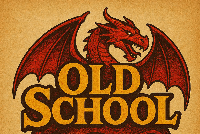I advise using a set of "travelling" mechanics and actively play all travels in game. Treat this just like exploring a dungeon. Some things that might be interesting to use that I can think of right now: Handle travelling frame by frame, with each frame taking about 6 hours. You then have the morning frame, the afternoon frame, the evening frame and the night frame. Treat each of these are a "turn" and handle them as such. Have visuals ready for this, just as you would during dungeon exploration. Personally, I made up tons of different "slides" for this, you'll find an example below to give you an idea. Find what's most relevant for you, use visuals to give the "feel" you want to players. Keep things clear and orderly, just as you would in a dungeon or in combat: Give a very brief description when the frame starts. (/desc The air is cooler this morning and as you prepare for the day ahead, you notice clouds closing from the west) Ask players for one action for the frame (Joe will keep watch, Alfred will try to navigate, Marie will do nothing special, etc). Make sure you have rules for each actions. Ask players to do their respective rolls for the frame Resolve the rolls on your side (random encounter, navigation error, etc) Give a brief ending description (/desc By midday, you reach a small river crossing that doesn't seem to be indicated on your map. The clouds dissipated earlier and now the sun is high and bright in the sky) Allow for varied paces and varied consequences. (Fast pace make actions more difficult or impossible, makes PC tired. Slow pace makes navigating easier, etc.) Give consequences to lack of resources (food, water, sleep, energy, etc) and weather changes. This need to be clear to everyone if you want to keep them engaged during travels. Keep random encounters varied and logical. It doesn't have to be all bad all the time. There are traders and other travelers, animals rarely attack human beings, etc. Here's an example what I use for my D&D Next game. I got about 50 of these, with various locations (including some cave ones for long underground travels, etc). It's not meant to depict things EXACTLY but give a general feeling, the "mood" of an area. There are millions of nature images available on the net to make these. As you can see, I have a grid in there as well for marching order (it's sized with the roll20 grid) and actions. That way, players can just use their tokens and place them themselves and everything's clear for everyone. The main point though, to me, if you want to make travelling a "thing", is to have mechanics for it that players can relate to and use. Otherwise it's too vague and quickly just becomes a DM narrative. My best advise is to treat it seriously, like a dungeon exploration for example, and players will hopefully feel that and get involved just as much. Edit: Oh, and yea, you need to have some potentially interesting things happening in your world so you need to "own" your world in details. If there is nothing whatsoever of interest between A and B, there is very little point to force players to travel 500 miles of desert using what I described above. Just be narrative about the journey, try to give some sense of scale in what you describe, then have the players simple "arrive" at their destination. 50 totally random encounters that serve no purpose whatsoever is...a bit boring in my view :) Overall I'd advise not going more than 4 or 5 days with nothing happening (and I'm not talking random encounter here). A good trick is to keep a "presence" on-going. For example, the party doesn't need to be attacked by wolves but they could hear howling for a couple days. The party may also meet a merchant on the road that has something interesting the party could fork into. Maybe there's an entire army moving through the land ahead, blocking the party. SOMETHING that makes sense in your world that makes actively playing the trip worthwhile. Big for big sake is useless :)








